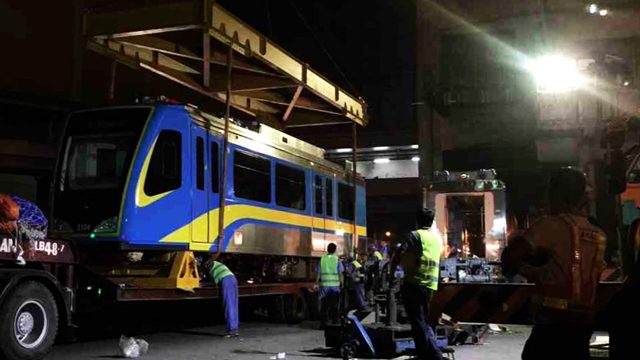SUMMARY
This is AI generated summarization, which may have errors. For context, always refer to the full article.

MANILA, Philippines – The Korean-Filipino maintenance provider of the Metro Rail Transit Line 3 (MRT3) expects the system’s capacity to increase to 800,000 passengers daily, as soon as 48 new light rail vehicles (LRVs) are in place by 2017.
The MRT3 currently services 500,000 passengers daily.
Busan Universal Rail Incorporated (BURI) said on Wednesday, December 14, that restoration works have brought the total number of trains in operation to 22 as of end-November 2016. This exceeds the power system’s maximum capacity of running a total of 20 trains at any given time.
Busan started maintaining the MRT3 in January 2016.
Each MRT train consists of 3 LRVs. So far, Busan has overhauled 9 Czech-made trains consisting of 27 LRVs.
“With more trains now in service, more passengers are being served. Average ridership has thus risen to 500,000 passengers daily in late November – a 25% increase in passengers since January,” MRT3 officer-in-charge Deo Leo Manalo told reporters.
As of end-October, MRT3 already hit its full-year revenue target of P2.3 billion.
“We have to keep it operational, by all means, but we don’t want to sacrifice safety,” Manalo said.
BURI is a joint venture of state-owned Busan Transport Corporation, Edison Development & Construction, Tramat Mercantile Incorporated, TMI Corporation, and Castan Corporation.
“But we need more components. End of next year is the target. Once the new power system is in place and the tracks are improved, we can run the trains faster. We can easily accommodate 800,000 passengers a day,” Manalo said.
When BURI took over the MRT3’s maintenance in early 2016, there were only 13 trains left operating.
To date, BURI said it has put 62 LRVs in good condition.
“Now, we are running 20 trains during peak hours. We have two trains in reserve. And we have two trains under general overhaul,” BURI managing director Eugene Rapanut said.
“Yes, things improved in terms of more trains and reliability. There was a large drop in removals or technical problems. But we are still not perfect. We have to address several things,” Rapanut added.
By the first quarter of 2017, BURI expects to have 24 operational trains consisting of 72 LRVs.
The MRT is paying its maintenance contractor P54 million a month, subject to taxes.
“Presently, we have 22 trains. But the power system can accommodate only 20 trains. We have two trains in reserve and ready to be deployed. With 22 trains, we are really outperforming our contract,” Mercado added.
He added: “The goal of our client, which is DOTr, is very simple: provide the most number of trains available, which is 20 at the peak period, and make the system safe, reliable, and maintainable.”
By 2017, Busan said 48 new LRVs made by China’s Dalian Locomotive & Rolling Stock Company will be put into the system.
As of November, Busan said 38 LRVs had arrived, with 32 already fully assembled and ready to go. – Rappler.com
Add a comment
How does this make you feel?
There are no comments yet. Add your comment to start the conversation.